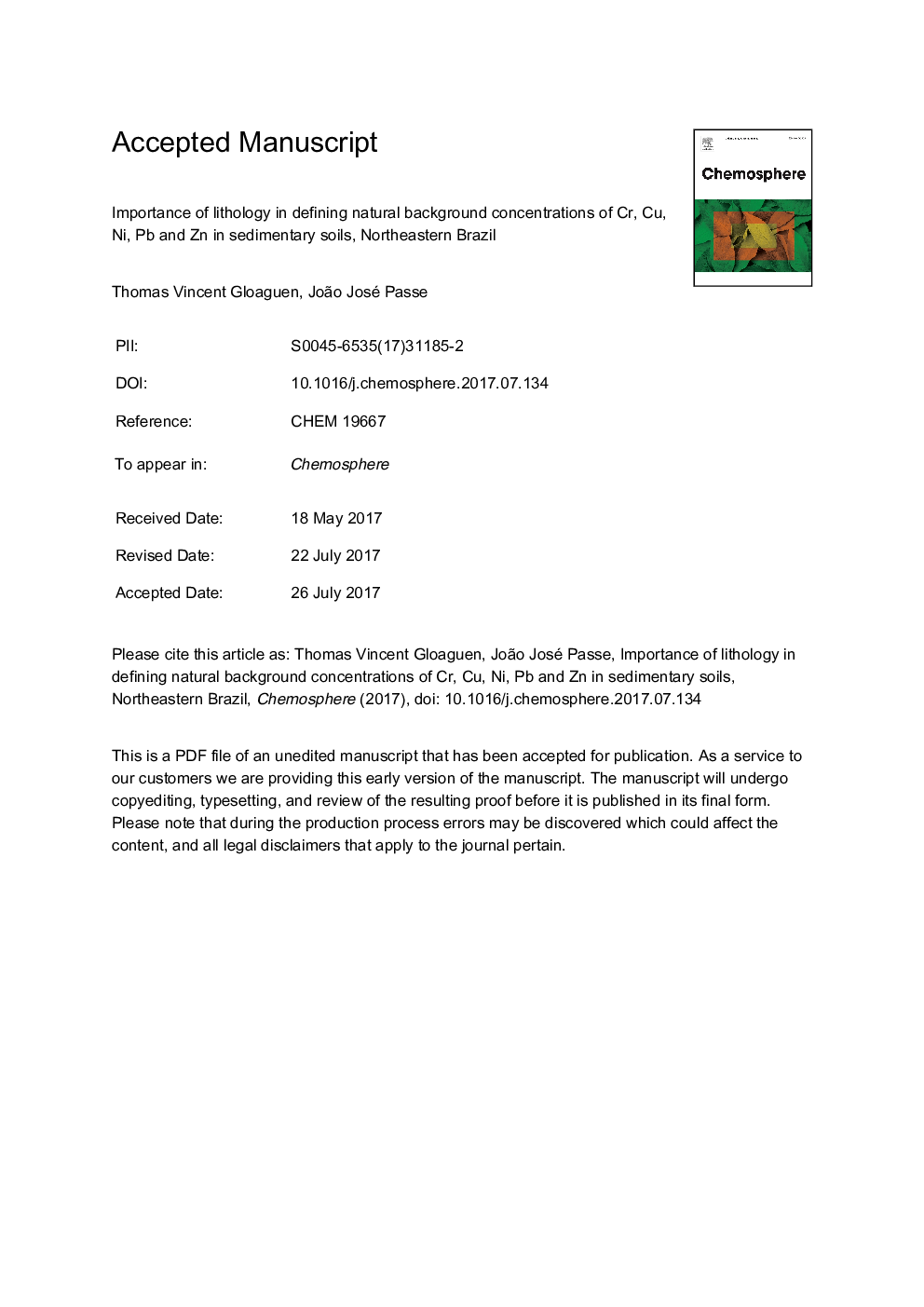| Article ID | Journal | Published Year | Pages | File Type |
|---|---|---|---|---|
| 5746046 | Chemosphere | 2017 | 39 Pages |
Abstract
The sedimentary basins of Recôncavo and Tucano, Bahia, represent the most important Brazilian Phanerozoic continental basin system, formed during fracturing of Gondwana. The northern basin of Tucano has a semiarid climate (Bsh) while the southern basin of Recôncavo has a tropical rainforest climate (Af). The aim of this study was to determine the distribution of trace metals in soils derived from various sedimentary rocks and climates. Soils were collected at 30 sites in 5 geological units at 0-20 cm and 60-80 cm deep under native vegetation. Physical and chemical attributes (particle size distribution, pH, Al, exchangeable bases, organic matter) were determined, as well as the pseudo-total concentrations (EPA 3050 b) and the total concentrations (X-ray fluorescence) of Cr, Cu, Ni, Pb and Zn. The concentrations of metals were overall correlated to soil texture, according to lithologic origin. Shales resulted in Vertisols 30.4 (Zn), 27.2 (Ni), 16.9 (Cu), 7.5 (Cr) and 2.5 (Pb) times more concentrated than Arenosols derived from the sandstones. High Cr and Ni values in clay soils from shales were attributed to diffuse contamination by erosion of mafic rocks of the Greenstone Belt River Itapicuru (from 3 km northwest of the study area) during the late Jurassic. Tropical rainforest climate resulted in a slight enrichment of Pb and Cr, and Ni had the higher mobility during soil formation (enrichment factor up to 6.01). In conclusion, the geological environment is a much more controlling factor than pedogenesis in the concentration of metals in sedimentary soils.
Related Topics
Life Sciences
Environmental Science
Environmental Chemistry
Authors
Thomas Vincent Gloaguen, José João Passe,
